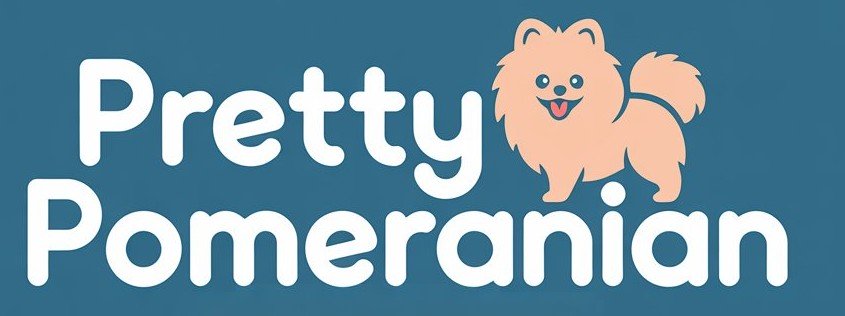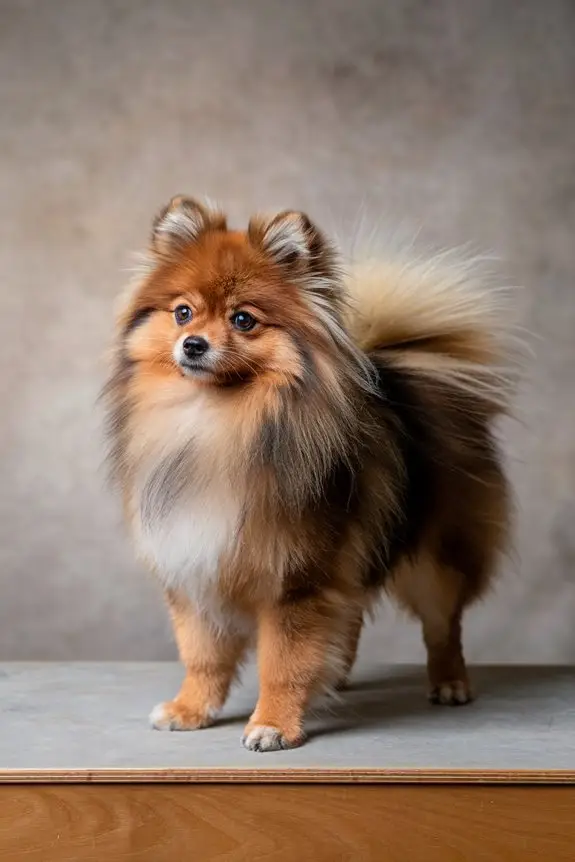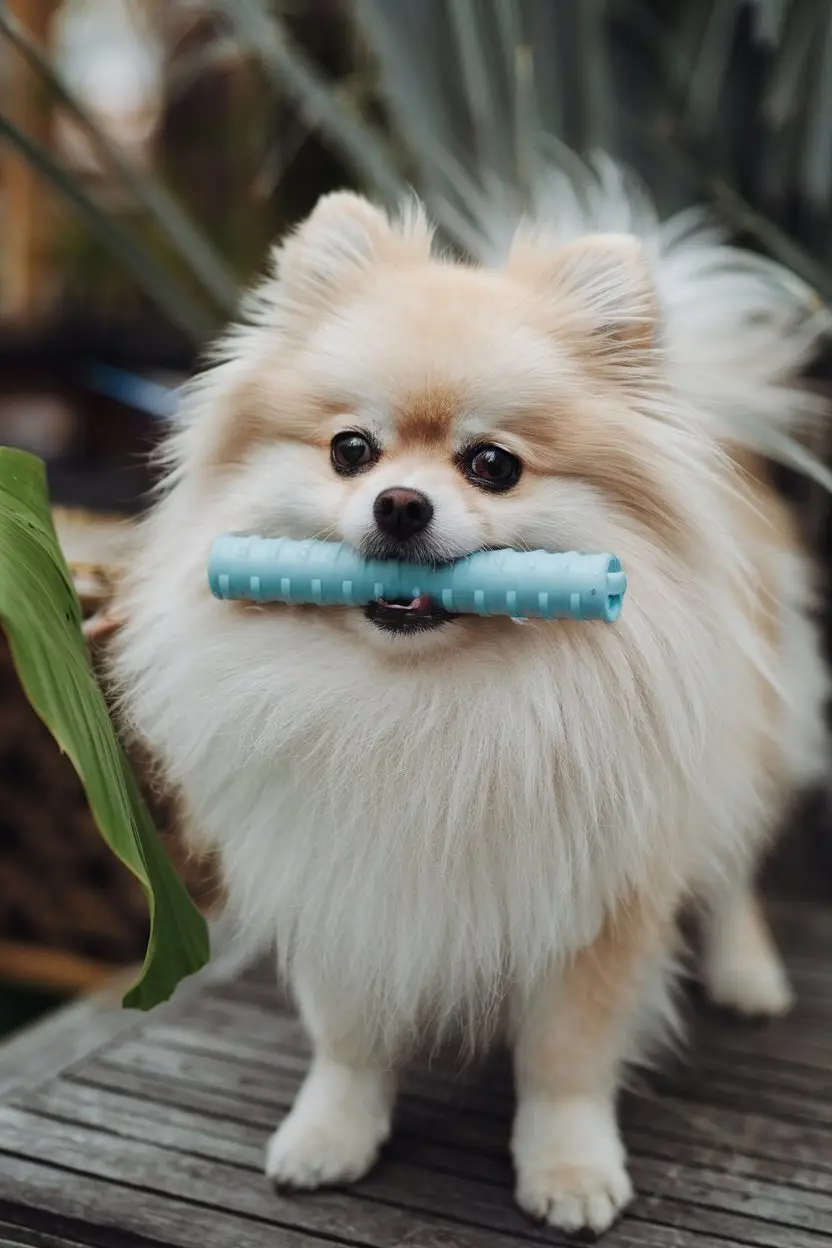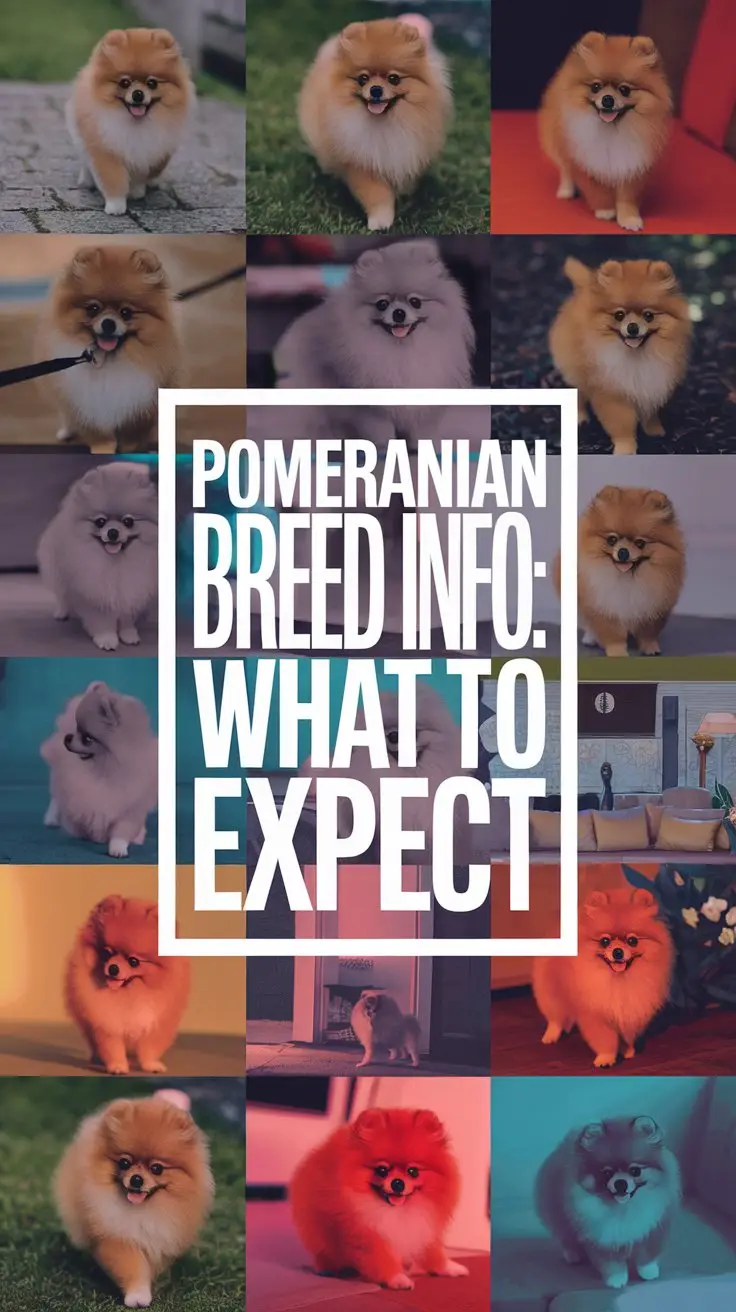These little Poms pack big standards into their tiny frames! They're sweet fluffballs weighing just 3-7 pounds and standing 8-11 inches tall, with a cute square build and that adorable fox face everyone loves. Their famous puffy double coat comes in all sorts of colors – from orange and black to fancy ones like lavender and blue. While they're small, they've got huge personalities and strut around like they own the place! Just keep in mind they need some training to keep those sassy attitudes in check. When they walk, they should glide smoothly with straight legs and a nice level back. Knowing what makes a good Pom helps you spot the real deal among these pint-sized cuties.
Physical Characteristics and Build
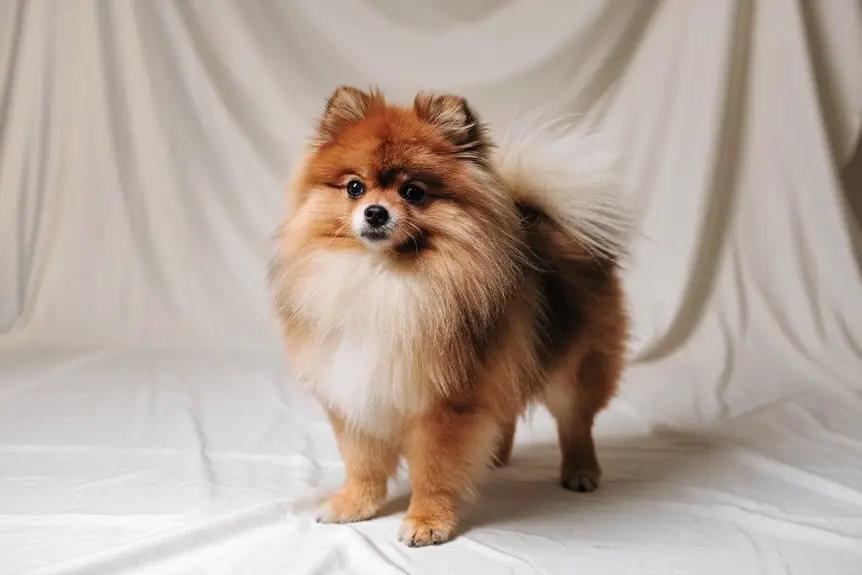
These little pups have a square shape that makes them look super balanced and compact. Their head is pretty unique – it's a bit rounded on top with a clear stop, and their muzzle is about half as long as their skull. As members of the Toy Spitz breed, they embody the classic Northern breed characteristics in miniature form.
Their cute almond-shaped eyes sit at a slight angle, giving them that bright, alert look, and their nose (which can be black or match their coat color in brown, blue, and beaver-colored dogs) fits their face just right. Their distinctive double coat layers help regulate their body temperature in various weather conditions.
Looking at their size, these dogs are totally square – they're as long as they're tall. Their compact little bodies typically weigh between 3 to 7 pounds, though show dogs usually hit the 4 to 6 pound mark.
Their back is nice and short, strong too, and they've this flat area at their rear that helps create that classic Pom look everyone knows and loves.
Coat Types and Colors
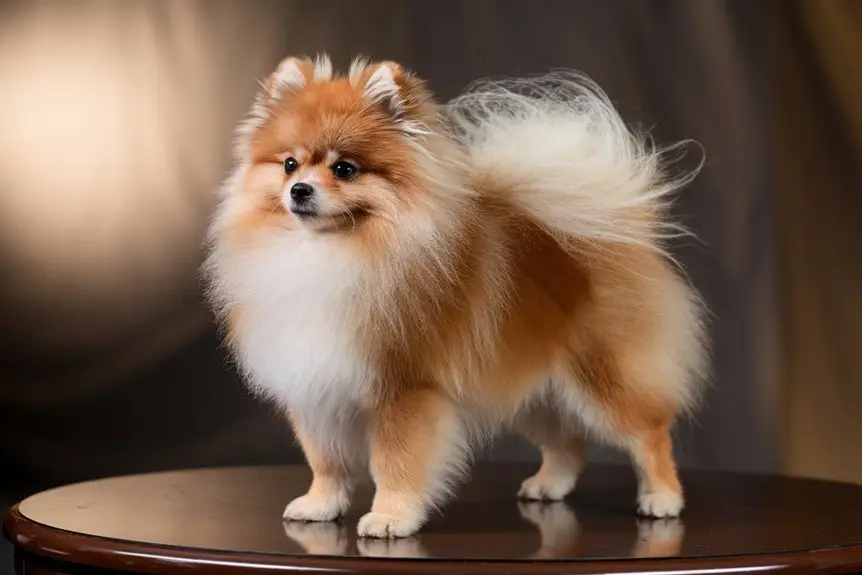
A Pom's famous look comes from their double coat – they've got a short, thick undercoat and longer, rough guard hairs on top that make them super fluffy.
Your pup will rock an awesome furry ruff around their neck and chest, plus feathery legs and a tail that looks like a fancy plume.
These little dogs come in tons of amazing colors. Most people see orange, black, cream, red, and white Poms running around, but you might spot some unique ones in blue, lavender, or beaver colors.
Some Poms even show off fun patterns like sable, brindle, parti-color, or merle. Just remember to keep up with grooming to keep those colors looking bright and that fur feeling great.
During seasonal shedding periods, which occur in spring and fall, your Pom's undercoat will shed in soft, fluffy tufts for up to two months.
Temperament and Personality Traits
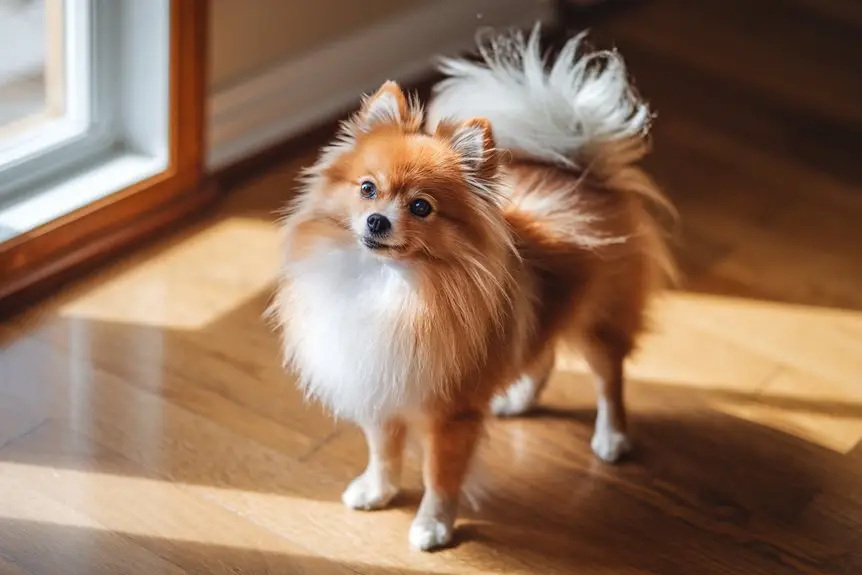
These little Poms might be small, but they've got big attitudes and tons of personality! They're super confident and charming little pups who'll stick by your side through thick and thin.
While they usually pick their absolute favorite person in the family, they're still total sweethearts with everyone else. They're really outgoing and make amazing family pets – just don't expect them to be happy lounging around alone all day!
If you've got a Pom, it's best to start training them when they're young. These smart little furballs pick up tricks pretty quickly, but they can get a bit yappy or nippy if you don't show them what's what from the start.
They make awesome little watchdogs too – always on the lookout and ready to protect their humans! Just keep in mind that these pups tend to match your vibe, so staying chill helps keep them balanced and well-behaved.
Their food-driven nature makes them particularly responsive to treat-based training methods and commands.
Size and Weight Requirements
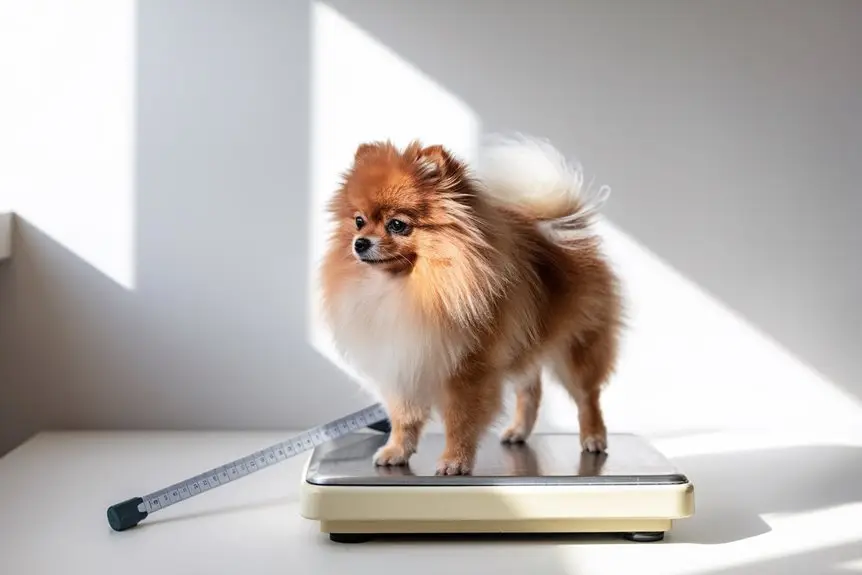
You'll want to know about three main size details for a perfect Pom: weight, height, and proportion. A typical Pom weighs around 3 to 7 pounds, and if you're into show dogs, they should be between 4 to 6 pounds.
Height-wise, your furry friend should be about 8 to 11 inches from the floor to their shoulders.
Poms come in different sizes, but good breeders try to stick to these measurements. Don't worry too much if your Pom is a bit outside these ranges – some end up smaller than 3 pounds or bigger than 7 pounds because of their genes or mixed breeding.
Some bigger Poms (called "throwback Poms") can get up to 14 pounds – that's because their great-great-grandparents were much bigger Spitz dogs!
Just keep in mind that a well-built Pom should look pretty square when you look at them from the side, with their body length matching their height at the shoulders.
Using a harness instead of a collar can help protect your Pom's delicate neck and prevent tracheal collapse issues.
Movement and Gait Standards
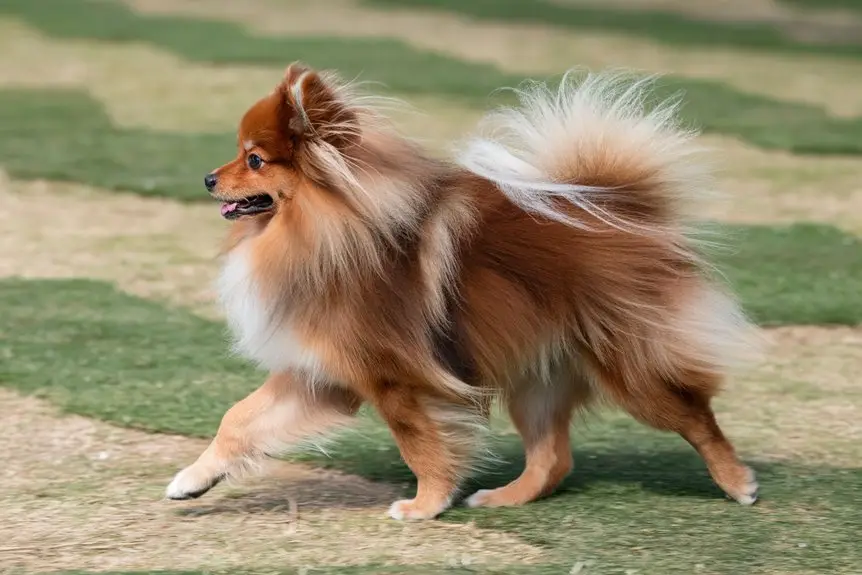
The way a good Pom moves really shows off their fun, bold personality with a nice, flowing gait. When checking how they move, look for legs going straight ahead without twisting inward or outward, and their back staying nice and level. A healthy Pom moves quickly and cheerfully, covering ground without looking like they're working too hard.
When watching how well they move, you'll see their paws make two tracks at walking speed, which come closer together when they speed up. Their back legs should push strongly with good knee bend and straight legs when you look from behind.
Try to avoid Poms that lift their legs too high, paddle around, or kick their back legs out too much. Signs of problems include walking with crossed tracks or swaying side to side – these mean the dog's body isn't built quite right.
Big problems to watch for are cow-like back legs, twisted knees, or weak joints that mess up your Pom's natural grace.
Frequently Asked Questions
How Long Do Pomeranians Typically Live?
A loving Pom will stick around for about 12-16 years, just like a little furry blessing! Give them the right care and attention as they get older, and you'll get to enjoy tons of sweet moments with your tiny buddy. It's amazing how these fluffy pals can fill up so many years with joy and tail wags!
Are Pomeranians Good With Children and Other Pets?
Your Pom can be a super-sweet buddy for the whole family! Just remember these little fluffballs need early training and socialization. Since they're tiny, you'll want to keep an eye on them around kids – no rough play allowed! The good news is they usually play nice with other furry friends in the house, whether it's cats or fellow pups.
What Health Issues Are Common in the Pomeranian Breed?
Just a heads up – Poms can get a bunch of health stuff like bad teeth, eye issues, breathing problems (tracheal collapse), and wonky kneecaps (luxating patellas). No need to stress though – keeping up with vet visits and giving your little fluff ball good care will help keep them happy and healthy!
How Much Does It Cost to Maintain a Pomeranian Annually?
You'll be spending around $2,500-$4,000 a year to keep your little Pom happy and healthy. That includes regular trips to the groomer ($400-$1,200), food for your fluffy friend ($240-$480), vet checkups, plus all those cute toys and supplies they need. Sure, it's not cheap, but these adorable furballs are totally worth it!
What Is the Average Price of a Purebred Pomeranian Puppy?
You can snag a purebred Pom pup for anywhere between $800 and $2,000, but if you want to go with a trustworthy breeder (which you should!), be ready to shell out around $1,500 to $3,000 for a good quality family pet.
